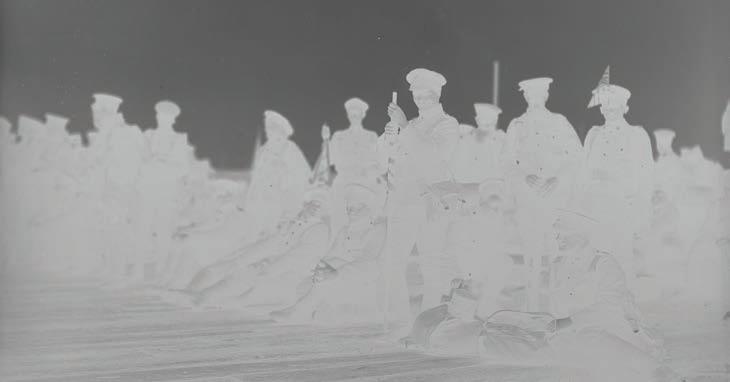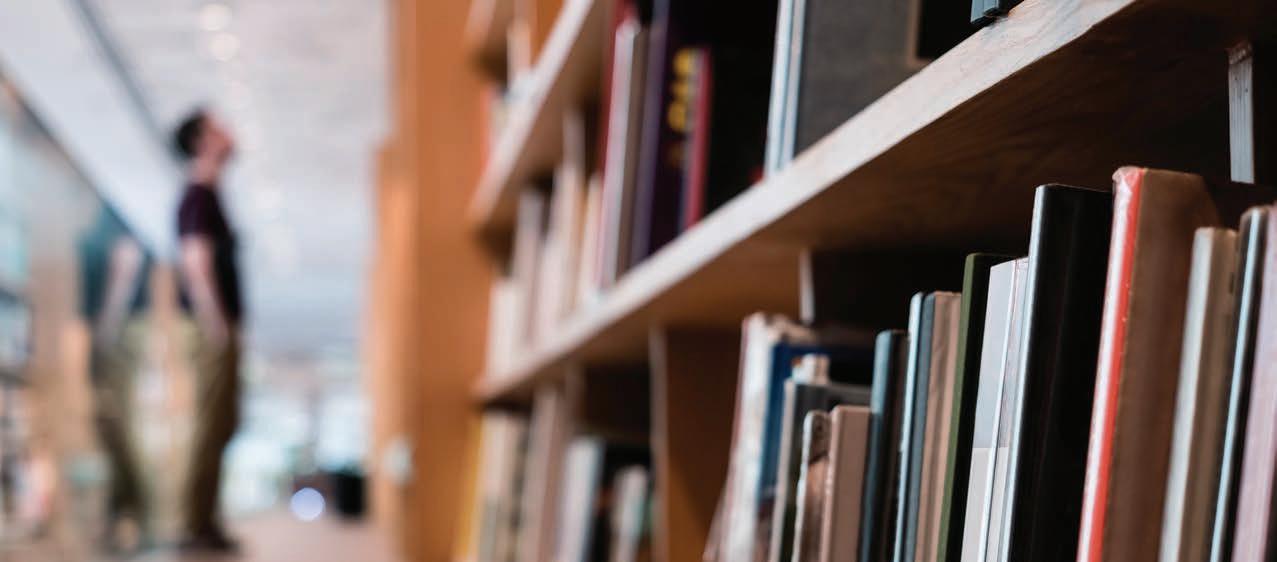
4 minute read
Fragile Things
By Alina Ruiz, Archivist
The BC Archives is full of hidden treasures. Many of them sit quietly on our shelves, just waiting to be rediscovered and enjoyed by the patrons of the archives and the people of British Columbia. Sometimes they’re waiting for the right person: the intrepid researcher who will fully appreciate and share them. Sometimes they’re just waiting on technology.
One such treasure is the Ernest Crocker fonds, an impressive collection of nearly 11,000 glass-plate negatives and countless photographic films, prints and albums. This fonds has been in the custody of the archives since the 1940s, but access has been severely limited—until now.
Ernest William Albert Crocker (1877–1968) emigrated from England in 1902. Though his background was in manufacturing and accounting, his true passion was photography. In 1908 he moved to Victoria and established the Trio Photograph and Supply Company on the corner of Yates and Government streets. The name stuck, and soon he was known by locals as Mr. Trio. When British Columbia mobilized for World War I, Crocker began working as an independent photographer for the local military camps. He was initially hired to take portraits of groups and individual soldiers, but he hung around the camps long after the formal pictures were taken. His semi-exclusive access to life in the camps resulted in a series of candid shots that are immensely valuable for understanding what life was like in wartime British Columbia.
In the early days of photography, photographs were captured on glass. The glass was coated in a light-sensitive emulsion made of silver halides. When these particles are exposed to light through a camera lens, a chemical reaction on the surface of the glass darkens the emulsion to create an image. Crocker used gelatin dry plates (as opposed to the wetcollodion process) for his photographs. These could be bought pre-coated and pre-cut in different sizes.
A dry plate had to be transported in a lightblocking plate holder. Once it was slotted into the camera, the photographer slid the covers
away and exposed it to light as a picture was taken. The plate was put back in its holder, to be processed later in a darkroom.
To mark the centenary of the end of World War I, the BC Archives embarked on a project to digitize and describe the military-related glass-plate negatives in the Ernest Crocker fonds. We digitized, described and uploaded
more than 3,000 images for public viewing as part of the project, which was funded by the BC Archives Trust.
Digitizing a collection of this magnitude requires many steps and considerations. First, the glass-plate negatives are assessed for conservation concerns and to confirm that the subject matter represented in the photograph is relevant to the project (in this case, World War I).
After carefully taking the glass plates out of their containers and envelopes, we place them emulsion-side down on two specially made plastic supports on top of a flatbed scanner. The plates are scanned and saved as TIFF files—the most stable format for long-term preservation. Next, some digital processing is done to the scans, such as flipping and rotating the image to its proper orientation, cropping edges and white balancing, if needed. At this point in the process, the photographs are still negatives—the areas that should be dark are light, and vice versa. We invert them to positives using photo-editing software, then compress the files to JPGs and upload them online with descriptions. room so that the image can be captured. Broken glass plates must also be captured this way, as the pieces cannot be balanced on the scanner supports. But the extra effort is worth it, as it allows us to share the photograph before conservation work begins.
Glass-plate photography was once the cutting edge of technology, and now digitization is bringing it to a whole new audience. Digitizing the collection has facilitated discovery of the photographs, and it also reduces handling of these at-risk items. Glass-plate negatives are prone to unique forms of deterioration, such as silver mirroring (oxidation) and emulsion flaking due to exposure to air, light and changes in temperature—not to mention plain old breaks and cracks.
Thanks to digitization projects like this, previously unseen photographic treasures— many showing understudied subjects, like the Canadian Siberian Expeditionary Force and the Chinese Labour Corps—are now getting the recognition they deserve.
You can view the digitized images at rbcm.ca/ernest-crocker-fonds.
Some of the glass plates were more challenging to digitize than others. While most negatives in the fonds are manageable, there are a number of oversized glass plates that did not fit on traditional flatbed scanners. These negatives had to be photographed with an overhead camera. When using this method, negatives are placed on a light table in a dark
1. Glass-plate negative: Soldiers and police stand guard outside Lenz & Leiser Wholesale Dry Goods after the Lusitania Riot, 1915.
2. A lina Ruiz photographs large glass-plate negatives over a light table in a dark room.
3. G lass-plate negative: Canadian Siberian Expeditionary Force soldiers wait to board SS Protesilaus, 1918.











